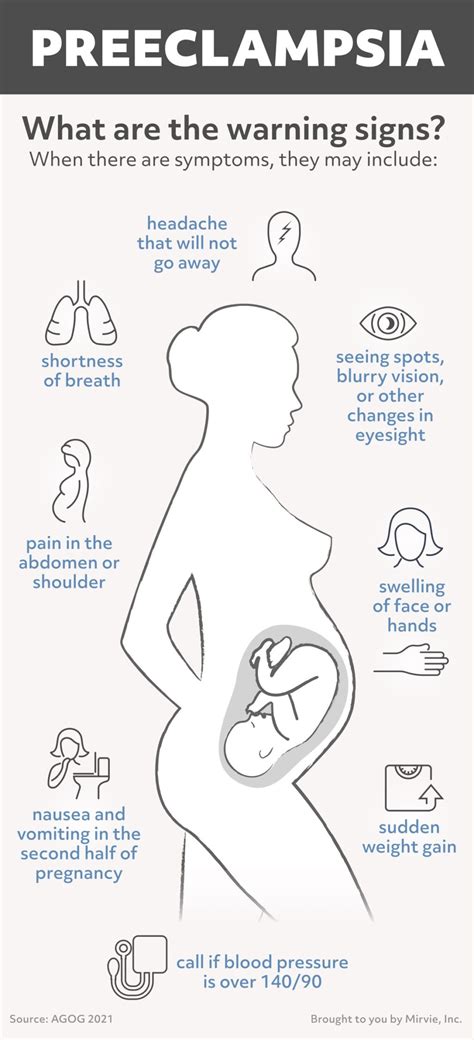Pre-eclampsia is a pregnancy complication characterized by high blood pressure and often accompanied by significant amounts of protein in the urine. This condition can lead to serious complications for both the mother and the baby if left untreated. Recognizing the symptoms of pre-eclampsia is crucial for early intervention and management. While some women with pre-eclampsia might not exhibit noticeable symptoms, especially in the early stages, being aware of the potential signs can help in identifying the condition early on.
Understanding Pre-eclampsia
Pre-eclampsia typically develops after 20 weeks of gestation, though it can occur earlier in some cases. The exact cause of pre-eclampsia is not fully understood, but it is believed to involve problems with the development of the placenta. The placenta is the organ that provides oxygen and nutrients to the baby and removes waste products from the baby’s blood. In pre-eclampsia, the placenta doesn’t develop properly, leading to high blood pressure and damage to other organs such as the kidneys and liver.
Key Symptoms
The symptoms of pre-eclampsia can vary from woman to woman, but some common signs include:
- High Blood Pressure: This is often the first sign of pre-eclampsia. Blood pressure is considered high if it’s above 140⁄90 mmHg.
- Proteinuria: The presence of excess proteins in the urine, which can be detected through urine tests.
- Severe Headaches: Unlike normal headaches, those associated with pre-eclampsia can be severe and persistent.
- Vision Changes: Blurred vision, sensitivity to light, or seeing spots can occur due to high blood pressure affecting the eyes.
- Nausea and Vomiting: While common in pregnancy, when combined with other symptoms, these can indicate pre-eclampsia.
- Upper Abdominal Pain: Pain in the upper right or middle of the abdomen, which can be a sign of liver dysfunction.
- Weight Gain: Rapid weight gain, especially if it occurs suddenly, can be a sign of fluid retention, a symptom associated with pre-eclampsia.
- Swelling (Edema): Excessive swelling in the hands, feet, and face, which can occur due to fluid retention.
Severe Symptoms
In severe cases of pre-eclampsia, symptoms can escalate and include:
- Severe Headaches that Don’t Go Away
- Vision Changes, Including Blind Spots or Sensitivity to Light
- Pain in the Upper Abdomen
- Vomiting
- Sudden Weight Gain
- Shortness of Breath
- Rapid Heart Rate
Managing Pre-eclampsia
Early detection and management of pre-eclampsia are critical. Treatment options depend on the severity of the condition and how far along the pregnancy is. For mild cases, frequent prenatal check-ups to monitor blood pressure and urine protein levels might be sufficient. In more severe cases, hospitalization might be necessary to closely monitor the mother and the baby. In some instances, the only cure for pre-eclampsia is delivery, and healthcare providers will weigh the risks and benefits of premature birth against the risks of continuing the pregnancy with pre-eclampsia.
Prevention and Awareness
While there’s no guaranteed way to prevent pre-eclampsia, maintaining a healthy lifestyle during pregnancy, including regular prenatal care, can help in early detection and management of the condition. Women with a history of pre-eclampsia in a previous pregnancy, those carrying twins or other multiples, and women with certain medical conditions like diabetes, kidney disease, or high blood pressure before pregnancy are at higher risk.
Conclusion
Pre-eclampsia is a serious condition that requires prompt medical attention. Being informed about the symptoms and risks associated with pre-eclampsia can empower pregnant women to seek help early, potentially reducing the risk of complications for both themselves and their babies. Regular prenatal care is essential for monitoring the health of the mother and the baby, and any concerns or symptoms should be discussed with a healthcare provider.
What are the most common symptoms of pre-eclampsia?
+The most common symptoms of pre-eclampsia include high blood pressure, proteinuria (excess proteins in the urine), severe headaches, vision changes, nausea and vomiting, upper abdominal pain, weight gain, and swelling (edema) in the hands, feet, and face.
Can pre-eclampsia be prevented?
+While there is no guaranteed way to prevent pre-eclampsia, maintaining a healthy lifestyle during pregnancy, including regular prenatal care, can help in early detection and management of the condition.
What are the risks of pre-eclampsia if left untreated?
+If left untreated, pre-eclampsia can lead to serious complications for both the mother and the baby, including eclampsia (seizures), stroke, and premature birth. It can also lead to placental abruption, where the placenta separates from the uterus, which can deprive the baby of oxygen and nutrients and cause severe bleeding that can be life-threatening to the mother.
Understanding pre-eclampsia, its symptoms, and the importance of early intervention can significantly improve outcomes for pregnant women and their babies. By staying informed and maintaining open communication with healthcare providers, women can navigate the challenges of pre-eclampsia and work towards a healthier pregnancy.


